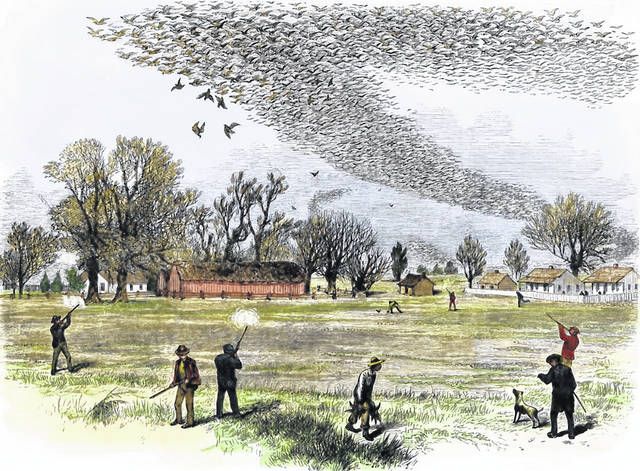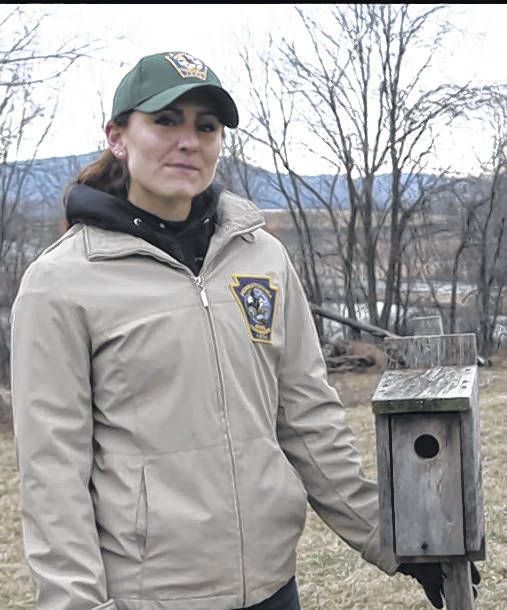Click here to subscribe today or Login.
During a recent turkey hunt in Bradford County, I found a remnant of the past.
As I walked a gently sloping hillside scanning the ground for turkey sign, an impressive expanse of stones caught my eye.
Situated on a level area at the top of the hill, the stones stretched for approximately 40 feet and were neatly stacked about 8 feet high. On the opposite side of the stones was an earthen ramp, the edges held in place by more stacked stones as the ramp feathered out to blend into the natural contour of the land.
The ramp told me the stacked stones had once served as the foundation for a barn, and as I searched the area I found smaller stacks of stone that were the corners of the ancient structure.
Today, the old foundation is hidden in a forest of large beech and oak trees. Aside from some areas where trees grew nearby and pushed the stones, the foundation still stood straight and true.
But what was even more fascinating was the place where I stood — in the middle of a mature forest — had once been a wide open space of farm fields and pastures. Old stone walls cris-crossing the hillside revealed the pattern of the fields that were now gobbled up by nature.
I paused by the old foundation and wondered about the history that had disappeared. At one time, probably well over 100 years ago, the hillside was the site of a thriving farm. Somewhere nearby stood a house where families were raised, holidays celebrated and the daily routine of life marched on. And I imagine that, at one time, a farmer passed by the stones of the old foundation every day for years, decades even, as he went about his daily chores inside the barn that is now just a memory.
What stories could these rocks tell?
As I leaned against the foundation, I let my imagination wind back in time to when the barn stood. It was probably built in the late 1800s and, judging by the size of the trees that covered the hillside, the farm ceased to exist roughly 80 years ago.
At one time, inside the barn, cows were milked by hand under the light of a lantern. Work horses were fed, loose hay was piled in the mow and oats and wheat were unloaded in the granary upstairs. And the structure itself was made sturdy with hand-hewn beams, mortise-and-tenon joints and thick planks that comprised the upstairs floor.
Today, all that has vanished.
I often encounter other old ruins while hunting. Barn foundations aren’t uncommon, yet I also find the remnants of houses, wagon sheds, springhouses, hand-dug wells and outbuildings.
Most of the time when I find ancient ruins, the wood that created the structures is no longer visible, having either burned up or rotted back into the earth long ago.
But the stones always remain.
It’s not hard to tell the purpose of a structure by looking at its foundation. Barn foundations are rather obvious, while the stones used to support a house are usually in a square or rectangle pattern with a well nearby. It’s interesting that the foundation for a house is always smaller than the accompanying barn, which was the epicenter of the farm and the family’s existence at that time.
I once found a house foundation that had a basement floor lined with bricks, and enormous, flat slabs of stone stacked for stairs. Hand dug wells are works of art with stone neatly laid in a circular pattern to a depth of 20 feet or more.
Sometimes other artifacts can be found around ancient stone foundations. Bottles, crocks, strap hinges and the hardware from old wagons are just a few of the items I’ve found protruding from the earth.
While hunting serves as the catalyst to get into the woods, often times it turns out to be a secondary reason.
I may be out there to hunt turkeys, deer or whatever may be in season, but at the same time I’m hunting history as well.







